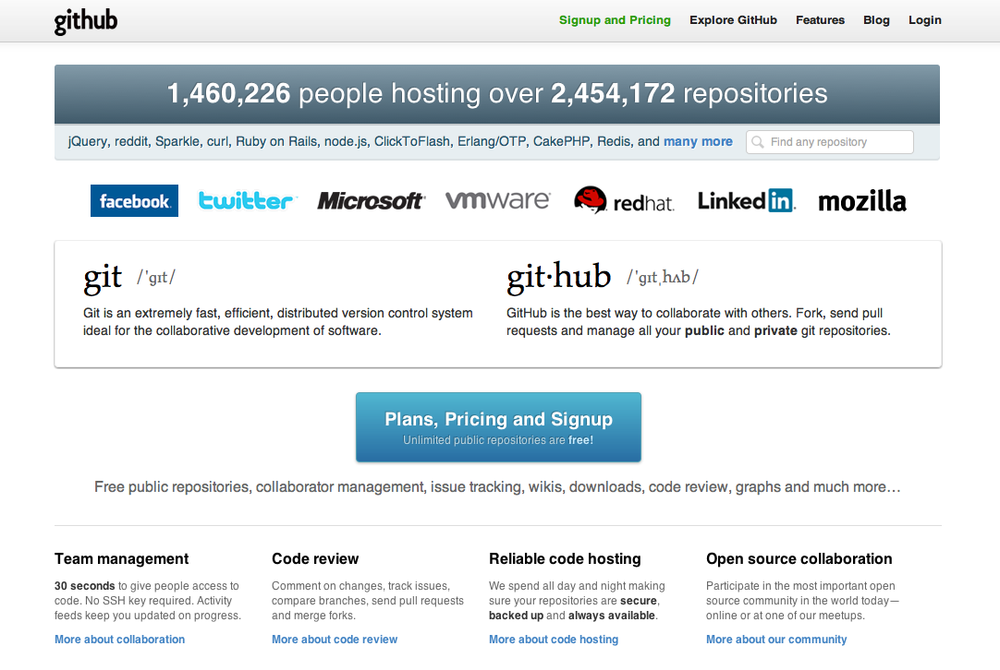Chapter 21. Git and GitHub
Although the other chapters of this book have focused on the Git command line tool, the years since the 2005 inception of Git have allowed and fostered the growth of a community of tools around it. Those tools number in the hundreds and take on many forms, from desktop GUIs like SmartGit to disk backup tools like SparkleShare. But out of this ocean of Git tooling, one stands at the forefront of the mind of many developers and even nondevelopers: GitHub.
This website, shown in Figure 21-1, introduced the phrase that seemed dismissible just a few years ago, but now feels like the way many of us should consider working: social coding. This model of social coding was first applied to open source, but the last two years have seen this idea of code as a point of geographically distributed collaboration grow even in the closed source enterprise. Let’s take a look at what GitHub has to offer.

Repo for Public Code
Statistics indicate that the first interaction that many
developers have with Git is in cloning a repository from GitHub. This is
the original function of GitHub. It offers an interface to repositories
over the git://, https://, and git+ssh:// protocols. Accounts are free for open source projects and all accounts can create unlimited publicly accessible repositories. This has greatly fostered the adoption of Git within the open ...
Get Version Control with Git, 2nd Edition now with the O’Reilly learning platform.
O’Reilly members experience books, live events, courses curated by job role, and more from O’Reilly and nearly 200 top publishers.

